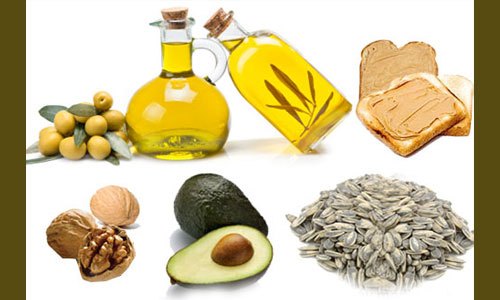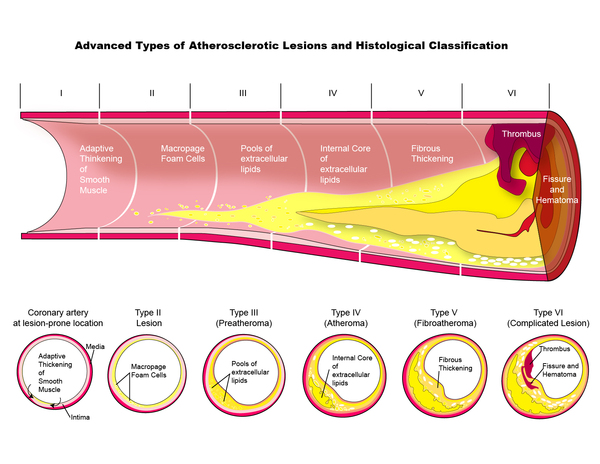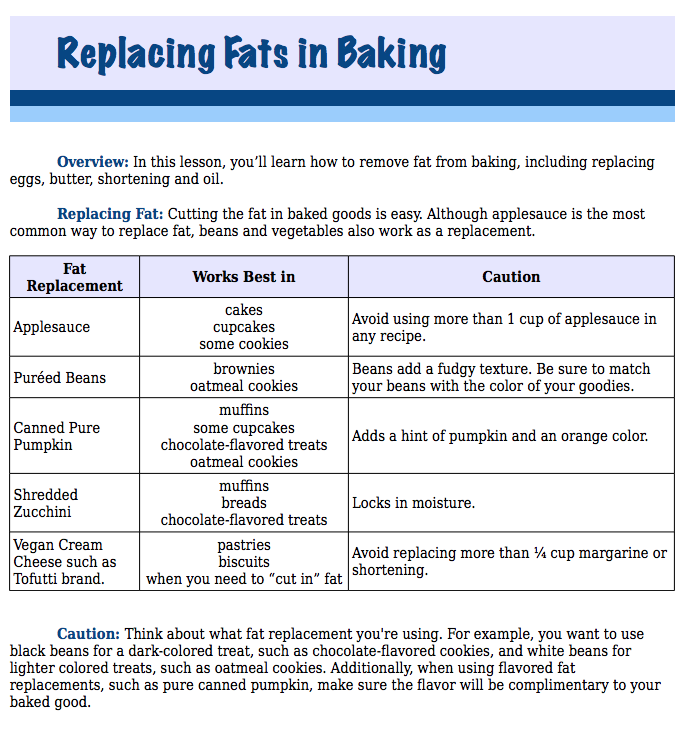The definition of a whole food is a nutritious edible meant for human consumption that possess all three macronutrients fat, protein, and carbohydrate in their natural form. Whole foods are important in a healthful diet because they are proportionally balanced to deliver optimal nutrition for performance and disease-prevention.
No vegetable oils are whole foods. They are 100% separated fats with no protein or carbohydrate included. Refined white sugar is pure carbohydrate with no protein or fat. Oil is to fat as refined white sugar is to carbohydrates: empty and unbalanced calories.
Oils – olive, coconut, sesame, avocado, canola, sunflower, palm, etc. – contain at least 120 calories per tablespoon and contain no fiber, no water, has minimal nutrition, and is is often highly processed. (Did you know that both proteins and carbohydrates have 4 calories per gram, that fat has 9 calories per gram and that alcohol has 7 calories per gram?) Oil is very high in calories compared to the same amount of maple syrup (52), balsamic vinegar (14), soy milk (8), vegetable broth (2), and water (0). (source)
The finest and least processed oils are first cold pressed virgin oils like olive oil, however even the most beautiful olive oil needs to be used sparingly, if at all, because of its high caloric, low nutrient profile. Accordingly to Dr. Michael Klaper, in the video below, the Mediterranean Diet is healthy in spite of olive oil, not because of it.
Here are 5 compelling reasons from medical nutritionists to greatly reduce or omit the use of oil in your food preparation:
1. Dr. John McDougall: Serial angiograms of people’s heart arteries show that all three types of fat – saturated (animal) fat, monounsaturated (olive oil), and polyunsaturated (omega-3 and -6 oils) – were associated with significant increases in new atherosclerotic lesions over one year of study. Only by decreasing the entire fat intake, including poly- and monounsaturated oils, did the lesions stop growing.
Dietary polyunsaturated oils, both the omega-3 and omega-6 types, are incorporated into human atherosclerotic plaques; thereby promoting damage to the arteries and the progression of atherosclerosis. (source)
2. Dr. T. Colin Campbell: The dietary lifestyle having the greatest ability to maintain and restore health, while preventing and actually reversing disease, is one comprised of whole, plant-based foods, with no added oil or refined carbohydrates. It is one fashioned over millions of years by nature and its nutritional composition just so happens to be about 10-12% fat, 10-12% protein and 75-80% carbohydrates, while being chocked full of life-promoting antioxidants and the right kinds and ratios of fats, proteins, and carbohydrates.
Drs. Esselstyn and Ornish have it right. They have shown that cardiovascular diseases can be reversed with this diet. We also have shown that protein, when animal-based and when fed in excess of our needs say of 8-10%, turns on cancer and elevates the processes that lead to cancer and other serious diseases. Nothing in medical practice comes close to matching these benefits. (source)
3. Dr. Caldwell Esselstyn, Jr.: NO OIL! Not even olive oil, which goes against a lot of other advice out there about so-called good fats. The reality is that oils are extremely low in terms of nutritive value. They contain no fiber, no minerals, and are 100% fat calories. Both the mono unsaturated and saturated fat contained in oils is harmful to the endothelium, the innermost lining of the artery, and that injury is the gateway to vascular disease. It doesn’t matter whether it’s olive oil, corn oil, coconut oil, canola oil, or any other kind. Avoid ALL oil. (source)
4. Dr. Joel Kahn: Olive oil is not a rich source of the essential fats we need and you’d have to eat almost 2,000 calories of this pure fat to meet our daily Omega 3 needs. Olive oil contains active chemicals called polyphenols, which may be good for you, but there are many better sources of this. For example, 10 berries will give 10 calories and zero fat and as many polyphenols as 1 teaspoon of olive oil with 120 calories and 13 grams of fat. (source)
5. Dr. Douglas Graham: Because they are refined from their original state, oils are no longer safe to ingest into the body. In their concentrated forms, they are pure fat and large amounts of that fat will be directly absorbed into the bloodstream, adversely affecting the blood viscosity (thickness) and the blood chemistry. However, eating some fresh olives, coconut flesh, or sunflower seeds, in moderation, is not bad for you. These whole foods assuredly contain plenty of fat but it is in a form that is combined with all the essential nutrients designed by nature to accompany that fat.
Avocados, nuts and seeds are extremely high in fat content. When it comes to fat, it doesn’t matter so much its origin; fat is fat. Fat goes from the lymph system directly into the blood. Too much fat will thicken the blood, causing the red blood cells to clump together so they cannot deliver oxygen to the cells. Excess fat also blocks the action of insulin in bringing sugars to the cells, which leads to diabetes. It is better to eat small amounts of avocados, nuts and seeds, and not to eat them daily. There is more than adequate fat for the body from fruits, vegetables and leafy greens. (source)
6. Jane Esselstyn, RN: And if these reasons haven’t already convinced you to omit oil and reduce fat intake, watch this compelling video: What’s happening with Type I and Type II Diabetes? Jane explains and demonstrates the mechanisms involved, then shows how a low-fat vegan diet can cure Type II and improve Type I.
So, now you are convinced to omit oils and reduce fats, but how does one actually eat this way? What about salad dressings, roasting vegetables, baking, or sautéing? Does one have to give these up to benefit from a healthful diet? Absolteuly not! Below are some great kitchen tips.
Roasting:
Oil helps with browning in the oven, but it’s not necessary for browning or crisping. Vegetables will brown on their own if you cook them low and slow. If you want something super crispy like French fries, finish for a minute or two at a higher temperature or pop them under the broiler. Make sure to use parchment (not wax) paper in the bottom of the pan to prevent sticking. (source)
If vegetables stick while cooking in a pan or baking tray, allow them to cool for 5 to 10 minutes. Once cooled, they should loosen easily. (source)
Sautéing and Stir Frying:
When you sauté vegetables, water and veggie broth do just as well, if not better than oil. Add a couple of tablespoons to your wok or skillet and get it nice and hot. Add vegetables and stir. Keep the veggies moving so they don’t burn. (source)
Browned onions have an excellent flavor and can be used alone or mixed with other vegetables to make a dish with a delicious taste. To achieve the brown color, as well as to flavor your foods, place 1 1/2 cups of chopped onions in a large frying pan with 1 cup of water. Cook over medium heat, stirring occasionally, until the liquid evaporates and the onions begin to stick to the bottom of the pan. Continue to stir for a minute, then add another 1/2 cup of water, loosening the browned bits from the bottom of the pan. Cook until the liquid evaporates again. Repeat this procedure 1 or 2 more times, until the onions (or mixed vegetables) are as browned as you like. You can also use this technique to brown carrots, green peppers, garlic, potatoes, shallots, zucchini, and many other vegetables, alone or mixed in a variety of combinations. (source)
Steaming:
Steaming is the simplest way to cook vegetables without oil. Just remember not to add your spices until the end to bring out the best flavors. Don’t have a steamer? Steam veggies in a flat-bottomed pan. Add just enough water (or veggie broth) to cover the bottom of the pan and get it boiling. Add your veggies and cover tightly. Cook for 1-2 minutes, remove from heat and let steam for 4-5 minutes. Add spices. (source)
Baking:
Use unsweetened applesauce or banana to replace oil in baked goods. They add a little sweetness and lots of moisture. Soaked dried fruits also work well in baking and they can add sweetness to sautéed veggies, too. (source)
Replace the oil called for in the recipe with half the amount of another moist food, such as applesauce, mashed bananas, mashed potatoes, mashed pumpkin, or tomato sauce. Cakes and muffins made without oil usually come out a little heavier. For a lighter texture use carbonated water instead of tap water in baking recipes. Be sure to test cakes and muffins at the end of the baking time by inserting a toothpick or cake tester in the center to see if it comes out clean. Sometimes oil-less cakes and muffins may need to be baked longer than the directions advise, depending on the weather or the altitude at which you live. (source)
Use parchment (not wax) paper between the metal and your food when using cake pans, loaf pans, and baking sheets. Parchment paper also keeps food from sticking to the surface of the pans. It can be found in most grocery stores. Cooling will also loosen muffins from the tins. Parchment paper can also be used under (or over) aluminum foil to prevent the aluminum from coming in contact with the food. Place a layer of parchment paper over the food in a baking dish, then cover with foil. Turn the edges of the paper over the pan to hold in the steam. (source)
The chart below is from Happy Herbivore:
Salad Dressing:
For salad dressings simply omit the oil altogether and leave it at that, or then add a little water or juice to make up for the lost volume. Oil and vinegar as a dressing is so traditional, it may be hard to imagine a salad without the oil, but I think you may grow to appreciate the cleaner, fresher taste of the vegetables and greens without the slipperiness.
For quick homemade dressings without oil I like to use prepared mustard, vinegar, water, or juice (lemon, grapefruit, lime, apple, carrot, celery), and if I will be making a blended dressing, I’ll add in some soft fruits or vegetables, such as strawberries, cucumbers, or mango. For creamy dressings, a little tofu, avocado or soaked nuts may be added, however go light on these since these are much higher in calories than vegetables and fruits. A tablespoon or two of minced fresh herbs (basil, cilantro, parsley) are also a tasty addition to homemade salad dressings. (source)
———
Personally, I am experimenting with vastly reducing my oil and whole food fat intake and replacing the calories with cooked starches. While I believe in the power of a low fat raw vegan diet (fruits & veggies with minimal nuts and seeds), right now a low fat vegan diet (fruits, veggies, grains, legumes, tubers, and minimal nuts and seeds) seems to be serving me well. I have committed to a 100% plant-based #animalfree diet and am more focused on keeping it low fat rather than focusing on keeping it all raw. I’m eating fruit by day and starches and veggies by night. So far, so good…though I am missing my Hip Pea Power Bowl with avocado!
Additional Resources:
• Is Alzheimer’s Disease Cardiovascular Disease?




{ 10 comments… read them below or add one }
Even avocados, Carla? Correct me if I’m wrong. I think its the omega 3 or its ratio with omega 6 that has kept my structurally malformed ankle from inflammation and allowing me to walk a few miles a day. I have learned that too much avocado is bad on digestion and probably puts too much fat in my diet, but perhaps one small one or half of a large one per day may be good. What do you think?
Whole fats, like avocados, are going to be your best choices for dietary fat. Keep in mind that one medium avocado (304g) has 507 calories with 70% of those calories coming from fat. On a 2,000 calorie per day diet, you’d want your fat intake to be a maximum of 200 calories. If you have the self-control to eat only 40% of an avocado, then you’re good. I don’t trust myself with a cut avocado. I don’t recall EVER saving the other half. LOL!
I like Dr. Graham’s advice: “It is better to eat small amounts of avocados, nuts and seeds, and not to eat them daily. There is more than adequate fat for the body from fruits, vegetables and leafy greens.”
These days I’m getting my avocado in my veggie sushi so that someone else handles the proportions for me.
Now I’m perplexed. About 2 months ago I basically cut out all fruit and grain and so have been primarily consuming raw seeds, nuts, green vegetables, and olive oil and coconut oil. Getting in about 90 grams protein a day. I’m finally losing the excess body fat. Your article gots me thinking it may be time for a overhall, I do love fruit but scared of losing the fat burning I’ve been experiencing since trying to covert my body to run on fat.
Your body is having to work very hard to convert fat and protein into glucose to fuel your brain and body. It’s basically in a stressful starvation/survival mode (ketosis) and that’s why you’re losing body fat. I commend you for eating #animalfree in your quest for a low-carb diet! I would encourage you to experiment with replacing the seeds, nuts, and oils with whole fruits. If you’re still hungry, I would recommend whole, organic, soaked, sprouted, and cooked grains. Keep the veggies! You could try this for a couple of weeks and see which way you feel better. I think your heart will thank you for it Shannon!
The doctors who are reversing and preventing heart disease, diabetes, obesity, and cancer recommend 10% of daily calories from protein, 10% from fat, and 80% from whole carbs. “WebMD.com recommends a minimum of 10% of daily calories from dietary protein with a maximum set at 35%. A researched article on Livestrong.com suggests athletes should consume between 10-15% of their daily calories from protein. Dr. Douglas Graham, athletic trainer and author of The 80/10/10 Diet, recommends a maximum of 10% of daily calories from protein.” Can Plant-Based Eating Provide Sufficient Protein?
But be careful: Fructose reduces growth hormone
This sounds like something that is promoted by ketogenic and Paleo advocates.
Great post, so much information. Thanks for putting alternatives to cooking with oil. I do use olive oil and not much of it, but reading this makes me think twice about boiling, stewing and poaching my family’s food more.
Marjorie recently posted..Using the Healing Benefits of the Sun to Get Healthier
Glad you found the post useful Marjorie! Thank you for taking the time to read & comment!
The information about avocados and oils is an eye-opener. Thank you. More work to do on my diet.
I’ve had to make significant changes in my diet too Richard to bring down my fat intake. It was common for me to eat an avocado a day. I’ve increased my intake of grains, legumes, and tubers (prepared w/o oil or fat) to replace the fat (avocado) calories and to keep my overall fat intake low. So far, so good!